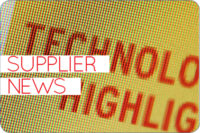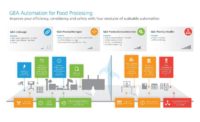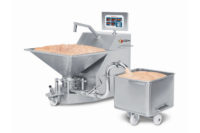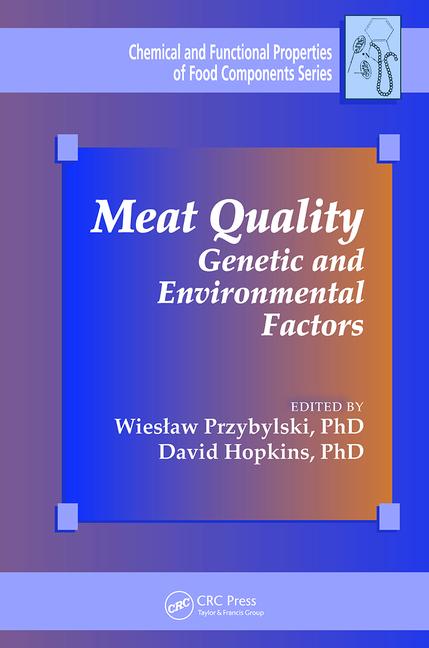Maximizing quality and minimizing costs with fully automated production lines

Under the motto ‘Excellence at Every Stage’, GEA presented its equipment and solutions for diverse application areas at this year’s IFFA in Frankfurt, Germany. Key processing and packaging exhibits demonstrated the benefits of automation; optimal process control; as well as the efficient use of resources, energy and labor in meat manufacturing.
The technology company is recognized worldwide as a leading supplier of complete preparation line solutions for processed meat and poultry as well as other products. The production line for chicken nuggets, part of which was displayed during IFFA, integrates several machines responsible for recipe-controlled meat grinding, mixing, forming, coating, cooking, frying and freezing in one seamless, fully automatic process – proving that automation is more than the robotization of single machines. GEA offers a complete data-connected production line that ensures consistent high-quality products while minimizing labor costs and with full traceability.
Connecting modern machines and ensuring effective running
Coupling meat treatment machines with additional processing steps brings many advantages to the overall production process. The chicken nugget line from GEA enables fully automatic production via batch execution based on a process recipe. A major advantage of having a centralized system is that the product recipe must only be read once, sending the parameters to the individual machines which then communicate with each other. This automatically triggers the pre-production phase, with materials provided just-in-time from silos, which means that much less labor is required and human error is kept to a minimum. Likewise, nugget quality is improved since the components are supplied at a constant temperature, mixture and consistency. The extremely fine-tuned system ensures low tolerances, so that the degree of deviation is very low. After production, reports are available to check the process conditions of each batch.
All machines and systems from a single source
By using a single supplier, like GEA, all machines, programs and interface are standardized, so that all process information can be shown inside the entire system for all equipment. The advantage is that data are aligned and comparable, visible in one system and standardized over one level. When a producer uses different systems, they must define all the integration requirements that must take place. This makes coming up with the offer, as well as the installation and commissioning phases much more complex. The reaction time is much longer, given the number of interfaces and various skills required. With GEA, alignment with a third-party interface is unnecessary as the company provides the complete line from offering, installation and commission from a single hand.
High production capacity with low labor costs
The chicken nugget line includes the GEA MaxiFormer at its heart, which provides very high production capacity, better consistency and significantly lower operating costs. The step-filling system minimizes the pressure used to fill each cavity carefully and progressively. This, combined with its rigid drum design, reduces wastage, improves filling accuracy, creates a higher quality formed product with excellent shape retention and minimizes down time for cleaning. Its knock-out system uses dry air at high pressure applied only to the relevant cavities, instead of the entire drum. “This significantly reduces air usage and, therefore, energy costs,” says Luuc van Lankveld, GEA Product Expert. “That’s an important innovation for achieving economy in production.”
High capacity, with less labor, is the way to develop new products in countries with high labor costs. However, the quest to minimize labor costs and increase production could not be pursued at the expense of product quality. Providing the quality is often achieved by taking practical measures around the plant.
“When designing the line for our customer Danpo we looked for example at different aspects that were important to the customer – not only space and functionality, but also the environmental aspect, food safety, cleanliness, ease of maintaining an overview and working conditions. I must say, we are proud of the result,” says Jos van Dommelen, GEA Group Leader Product & Project Sales Support.
Danish customer is convinced of the line’s advantages
Danpo, part of Scandi Standard, the largest chicken processing enterprise in Scandinavia, commissioned GEA in 2018 to build a fully automatic line for chicken nuggets. The factory in Farre, Denmark, produces a wide range of fully-cooked chicken products over four production lines.
“GEA helped us to develop the line machine by machine. They provided a round-the-clock service with quick, easy solutions to improve the line capacity and performance,” explains Per Ulrik Jørgensen, Danpo Product Technical Manager at the Farre factory.
The meat is delivered to the line in 500 kg batches, ground, then mixed with water and a range of ingredients and chilled to -2 degrees Celsius in the GEA ProMix via the use of nitrogen. GEA’s patented step-fill system pumps the meat into the GEA MaxiFormer to create the desired shape in a stable filling process. The nuggets are then moved by conveyor through a pre-duster, cooked to a core temperature of 73 C, breaded or battered as required then flash fried at 190 C, and frozen. The entire process takes just six minutes.
“With GEA delivering all the equipment on the line we were certain each element would fit together and be compatible,” says Per Ulrik Jørgensen. “We run 60-hour production shifts, with only a quick forming drum replacement and some light rinsing of the conveyors – approximately every 10 hours. For the rest of the time, the operators just watch and maintain an overview. When the operators can put their hands in their pockets, and have nothing to do, I know it’s working well,” Jørgensen adds.
Individual automation of processes
Each customer has different needs and framework of conditions. Some customers require less, while others are looking for models that offer even more connectivity than required by Danpo.
At the center of each automated process is the ability to start multiple machines at once while ensuring the safety of the production environment – which then increases productivity. Key features are semi-automatic batch control and machine collision interlock. For example, the interconnection of the belt loader, filler and former eliminates the need to use and store trolleys given everything remains in flow. This first level of automation is available from single equipment to full line set up.
When customers must comply with traceability regulations, the system can be used to record all material movements throughout the process while interacting with the customer’s systems. Barcode scanners are used to record all manual material additions and label printers are used to identify all materials discharged to bins/containers. The system allows users to find out where materials were used and to trace the process conditions for end products. By using an ERP system on the customer side, this module can also be extended with an ERP interface – preventing the double entry of recipes and material lists. The interface also reports production data back to the customer’s ERP system.
With an office client (i.e. computer inside the office environment) the customer has the same view as the employees on the production floor. It is easy to oversee the complete process as well as create recipes. Planning and analyzing the data is easier in this environment.
GEA automated systems can fulfill customer demands with different modules that can be extended in functionality, for both connected machines and client connections.
For more information, visit www.gea.com.
Looking for a reprint of this article?
From high-res PDFs to custom plaques, order your copy today!









